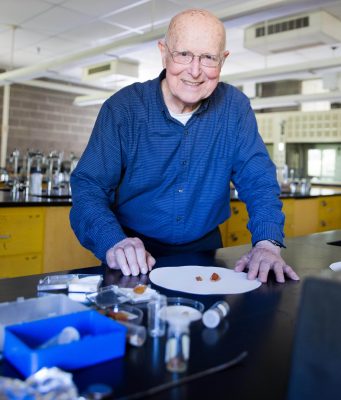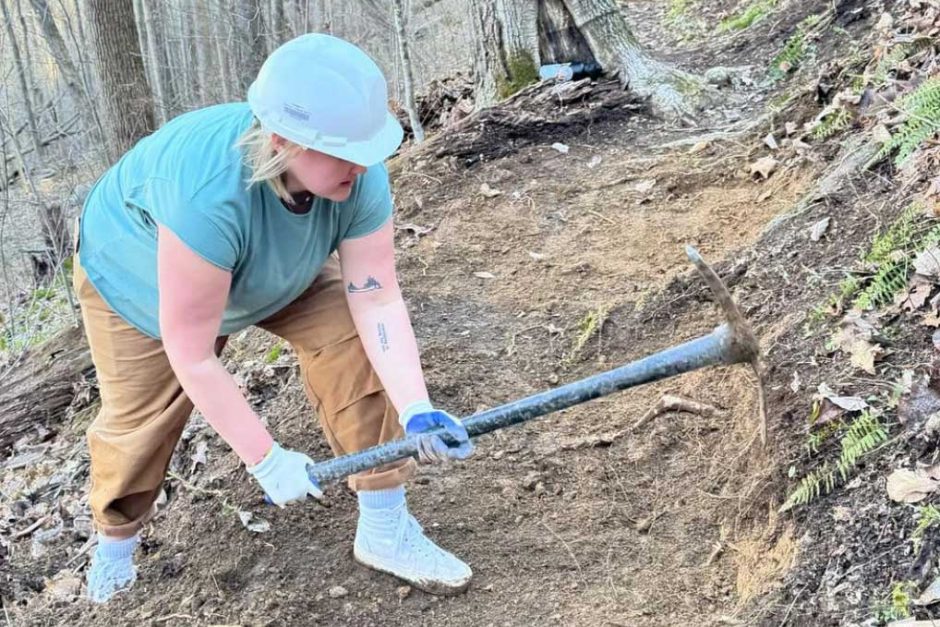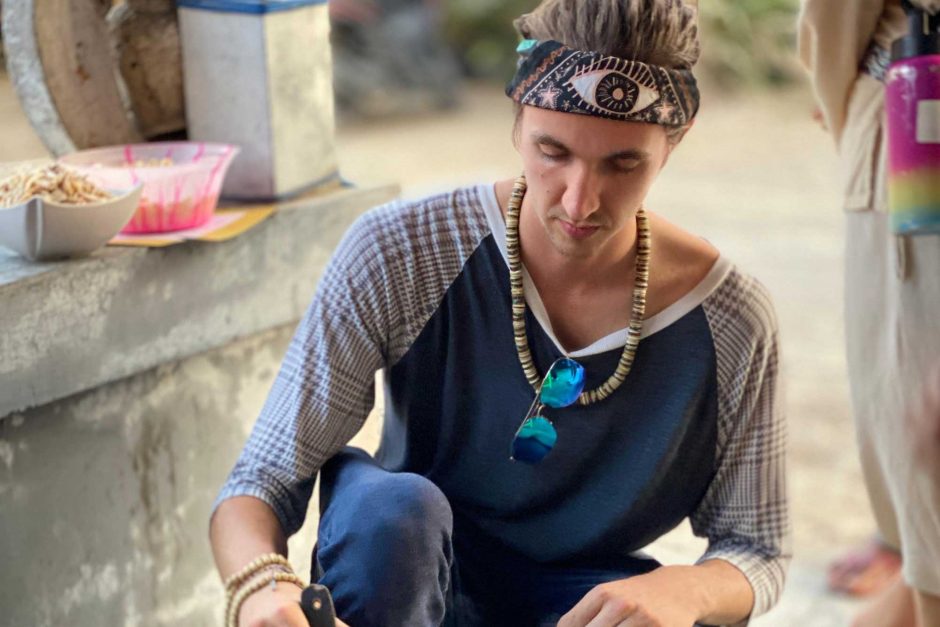No crystal-clear reason for lab’s rare outcome
Lab experiments are not typically the stuff of legends. However, a singular lab at Cornell College not only has been published in an academic journal and lectured about on other campuses, it even has its own hall of fame.

Professor Emeritus of Chemistry Addison Ault’s photochromic compound experiment was novel when it was introduced in the 1970s because students could change the color of crystals. Then a student developed a single large crystal during the experiment which shocked even Professor Ault.
Ault has written about the lab in the Journal of Chemical Education and lectured about or shared it with colleagues at the University of Wisconsin-Madison, Penn State University, and at Harvard University where he taught summer school.
“Even if you don’t get a single crystal, it’s a wonderful lab because students get ecstatic when the crystals turn from colorless to blue,” Ault says. “I have sometimes had students who were not in the course ask to do this lab!”
Ault, who taught at Cornell from 1962 to 2012, recently visited his former laboratories in West Hall and saw that students continue to enjoy his colorful experiment.
Since Ault retired three more students have joined the chemistry department’s Single Crystal Hall of Fame:
- Craig Kouba ’75
- Heather Parham ’98
- Graham Pumphrey ’02
- Rhonda Reisdorff ’01
- Ashley Meyer Jacobi ’06
- Andrew Jeffrey ’08
- Sara Marsteller ’07
- Kristina Pontarelli ’09
- Lindsey Wilson (2006 continuing ed student)
- Yongik Lee ’11
- Kirtley Hitt Compton ’12
- Chase Johnson ’12
- Andrew Campbell ’13
- Adam Jones ’13
- Alex Place ’17
Professor Ault talks (and laughs) about the excitement surrounding this lab:



